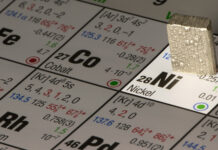
[miningmx.com] — THE world’s largest resources company, BHP Billiton, is still not seeing any sustainable demand returning for its products in developed economies and it is keeping close tabs on Chinese imports after a bout of restocking for clues on real demand.
In its September quarter update, BHP showed a mixed performance, with copper and nickel output falling while iron ore and manganese production increased quarter-on-quarter.
At BHP’s Olympic Dam uranium and copper mine in Australia a key shaft was damaged by a runaway skip and the company has switched to a smaller shaft to hoist ore and this means only a quarter of normal full production will come out of the mine, news which put upward pressure on copper prices.
There has been an increase in positive economic news from most economies in the past three months, BHP said, with the Chinese economy continuing to be strong, stimulated by stimulus spending on infrastructure and internal consumption.
“China’s re-stock of commodities is essentially complete and there is now evidence of higher than normal stockpiles across the supply chain. We continue to look for Chinese imports to more closely reflect real demand over the remainder of 2009 calendar year,’ the company said.
Unemployment in major developed economies like the United States, Japan and Europe is expected to rise in the near term despite improvements in a range of performance indices.
“We are starting to see some positive impact of re-stocking of pipelines, particularly in steel making raw materials, after a period where demand essentially disappeared,’ BHP said.
“Despite the low metal inventories in developed economies, there is little evidence yet of sustainable demand for metals emerging post the northern summer. We continue to stress that this developed economy improvement is not without volatility and is from a very low base,’ it said.
“We maintain our view that real demand follow-through in developed economies may not be transparent until mid-2010 calendar year.’
UBS said in a note: “UBS recently lifted its growth expectations for Europe to 2.1% in 2010 and we have seen the first pickup in “real’ end demand in autos and housing, rising German Ifo and US durable goods.
“Metal demand has historically sharply rebounded in the 6-18 months after a
recessionary trough, and then normalised by 18-24 months after the trough.”
At its South African businesses, BHP showed a steep jump in production at its manganese joint venture with Anglo American.
While the group’s managenese output is more than a third lower than it was a year earlier, the quarter-on-quarter output is 131% higher at 1.156 million tonnes. Manganese alloy output, which was nearly 70% below the total a year ago, rose 152% quarter-on-quarter to 63,000 tonnes.
In South Africa, manganese output rose from 128,000 tonnes in the June quarter to 428,000 tonnes. The alloy business put out 30,000 tonnes compared to just 5,000 tonnes the previous quarter.
With constrained rail capacity and new entrants coming in to the production side of the business in South Africa it will interesting to see what BHP will manage to achieve in coming years.
For energy coal, of which South Africa is BHP’s single source, climbed in that country to 8.1 million tonnes from 7.7 million tonnes in the June period, but was down from 8.3 million tonnes a year earlier.










